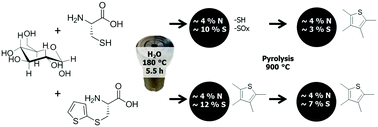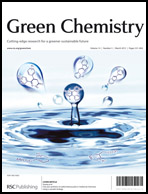In terms of broadening the potential application range of carbon based materials, heteroatom doping provides a useful tool to moderate their physical and chemical properties. While nitrogen doped carbons have been extensively researched, the reports for sulfur, and especially nitrogen/sulfur dual-doped materials is far less exhaustive. We present a one-pot synthesis of dual nitrogen/sulfur doped materials which is based on sustainable carbohydrate and amino acid precursors and enables tailoring of the final material's physicochemical properties. The addition of cysteine gives rise to pending sulfur functionalities, while addition of thienyl-cysteine results in structurally bound sulfur within the carbonaceous framework. Post pyrolysis offers an additional tool for controlling the material stability and results in microporosity as well as superior conductivity relative to undoped carbon microspheres from glucose. Nitrogen doping levels of about 4 wt% and sulfur doping levels of 3 wt% to 12 wt% could be achieved. The samples were, amongst other methods, characterized by XPS, 13C MAS solid state NMR and both N2 and CO2 sorption isotherms. Since this is the first report on heteroatom doped, sulfur containing carbon materials obtained via hydrothermal carbonization, we anticipate our work to be a starting point for more sophisticated studies concerning the role of sulfur (and nitrogen) on the physicochemical properties of hydrothermal carbon.

You have access to this article
 Please wait while we load your content...
Something went wrong. Try again?
Please wait while we load your content...
Something went wrong. Try again?


 Please wait while we load your content...
Please wait while we load your content...